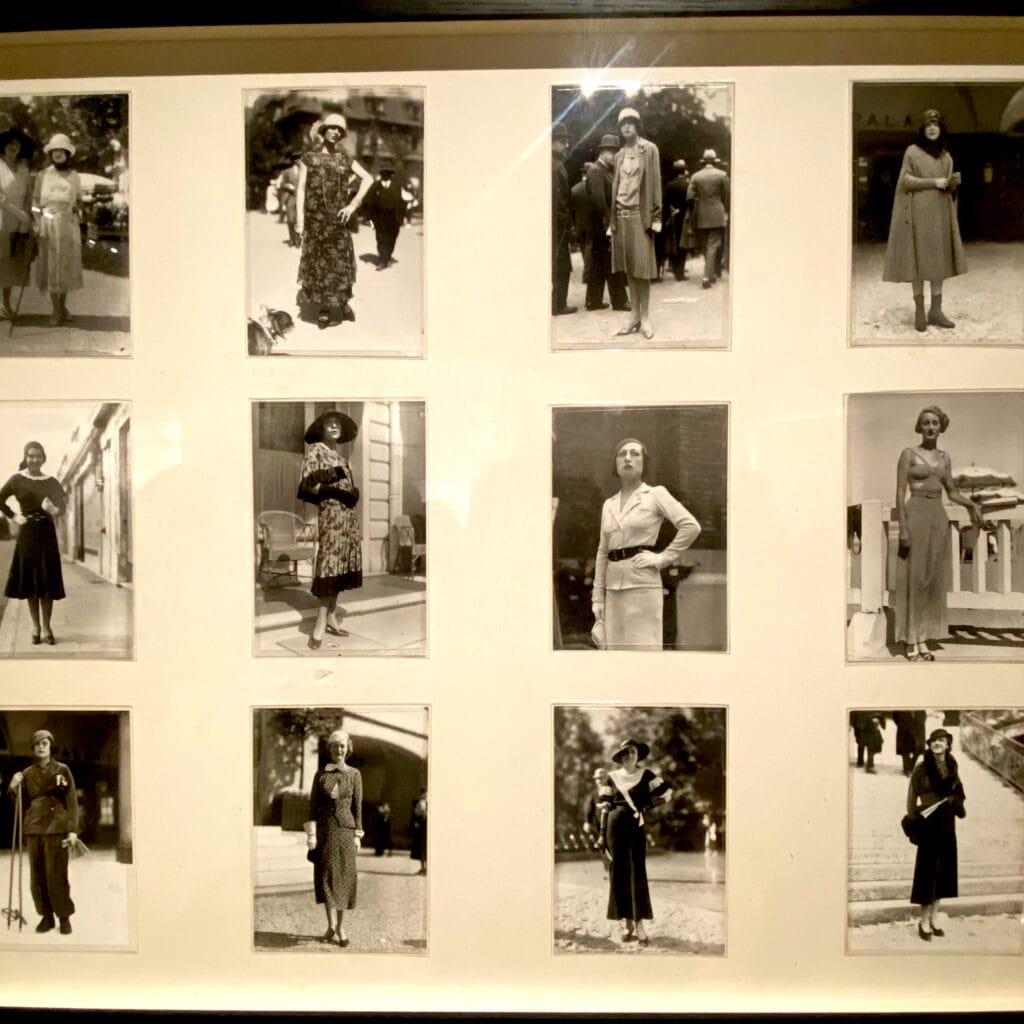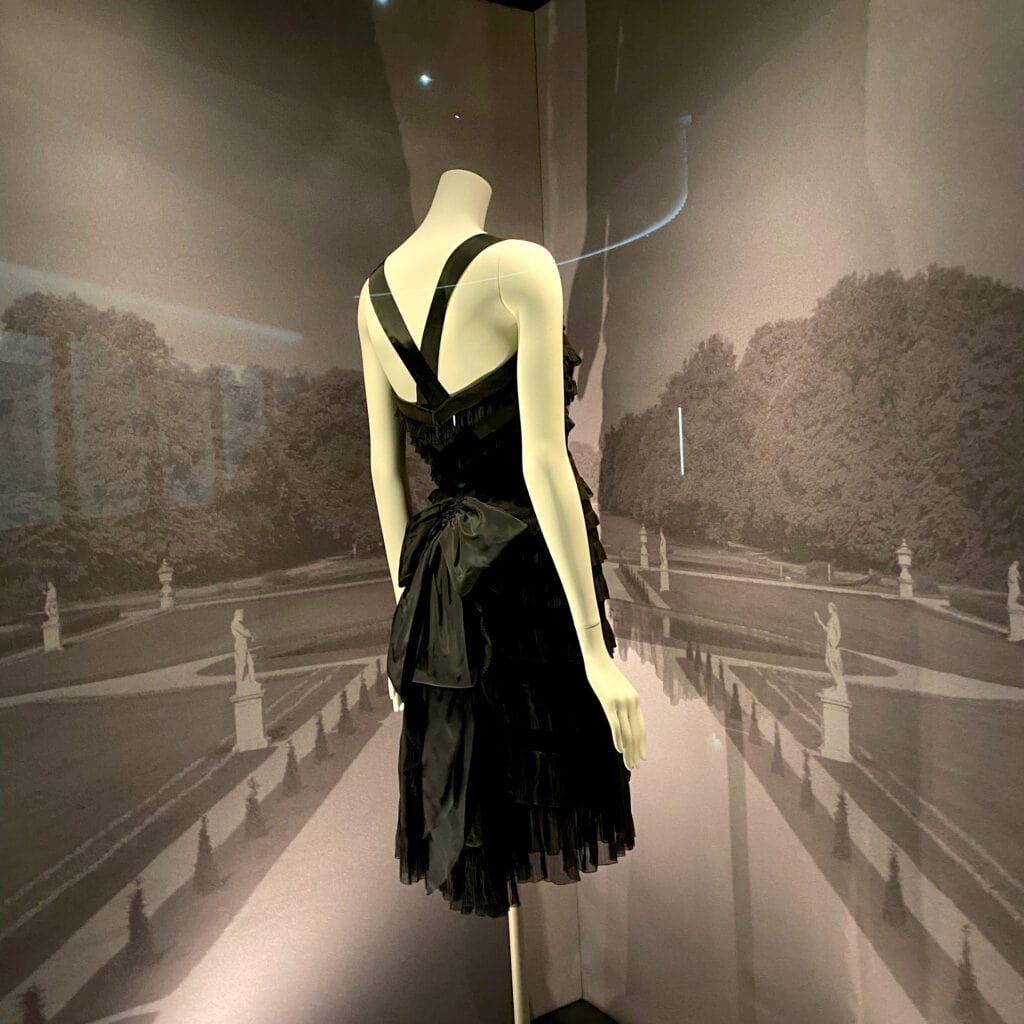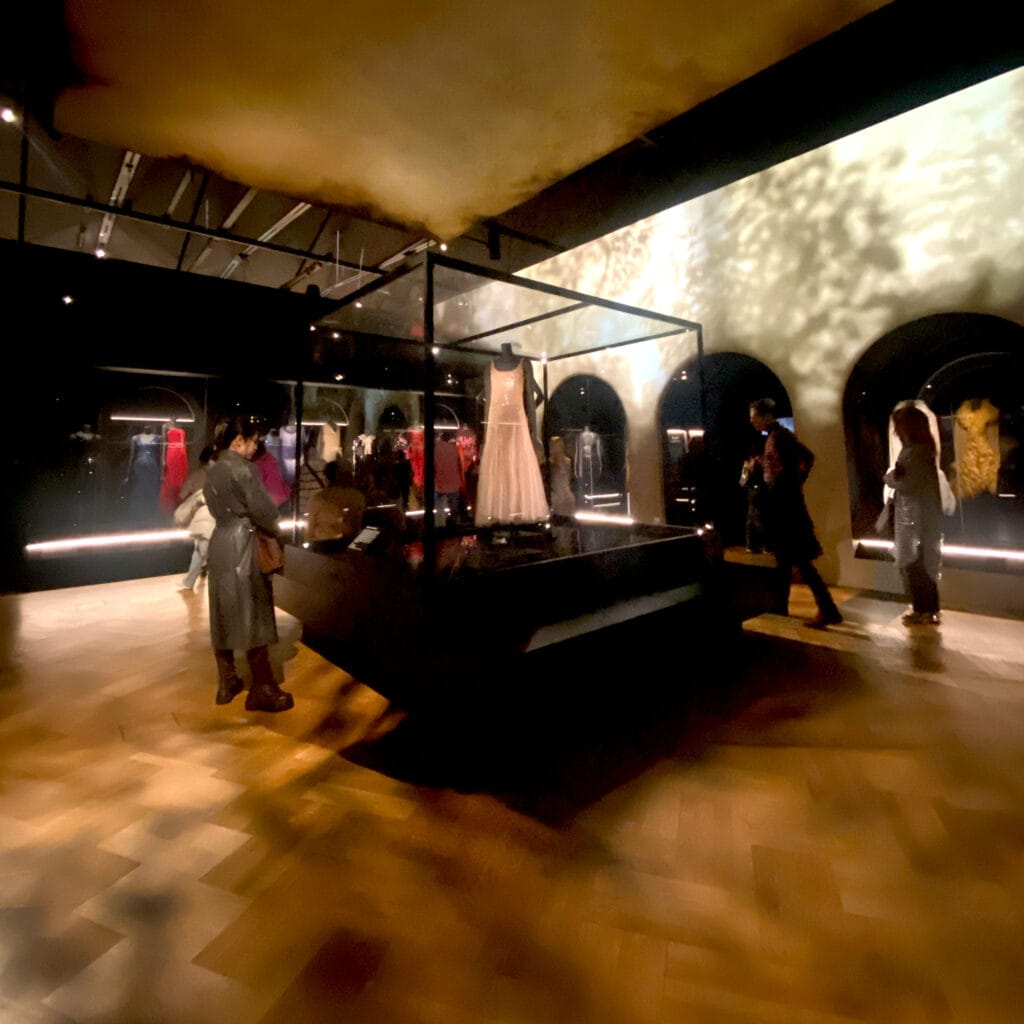Writing by AVANTELIER, Photo & Video by AVANTELIER

“She has created her own life. She has never married. In the rue Cambon she is simply spoken of as Mademoiselle.”
Sylvia Lyon, Bystander magazine, 1929
The “Gabrielle Chanel Fashion Manifesto” highlights the enduring influence of Coco Chanel, a dominant figure in 20th-century fashion, whose innovative ideas transformed women’s wardrobes with practical, stylish garments challenging haute couture norms. The exhibition showcases Chanel’s emphasis on comfort, simplicity, and her unique approach to fabric and construction. The display also explores her impact on textiles, collaborations in Britain, and the evolution of her eveningwear, emphasizing the interplay between restraint and luxury. Chanel’s iconic return to fashion post-World War II, marked by the relaxed yet elegant Chanel suit, is a central focus, demonstrating her commitment to modern femininity. Additionally, the exhibition touches upon Chanel’s involvement in costume design for Hollywood films, highlighting her sultry and sophisticated contributions to the cinematic world.
Coco Chanel, an enigmatic force in 20th-century fashion, is celebrated in the “Gabrielle Chanel Fashion Manifesto” exhibition, a captivating exploration of her revolutionary career. This comprehensive showcase delves into the multifaceted layers of her influence, from her groundbreaking design philosophy to her innovative use of textiles and international collaborations. At the core of Chanel’s design ethos was a commitment to redefining femininity. The exhibition unveils the “Chanel manifesto,” emphasizing comfort, simplicity, and unrestricted movement. Her designs, a personal reflection of her lifestyle, challenged the conventions of haute couture, resonating with active, independent women.
The exhibtion have various section : CHANEL IN BRITAIN, CHANEL TEXTILES, CHANEL ON SCREEN, LUXURY AND LINE, RETURN TO FASHION, THE CHANEL SUIT and so on
Here, let’s begin with the chapter of Chanel in the United Kingdom starting from the year 1927. In 1927, Chanel inaugurated a London salon, tailoring garments specifically for a British clientele. Having sourced fabrics from Britain since the early 1920s, Chanel was particularly impressed by the quality exhibited at the British Industries Fair in 1932. Subsequently, she established British Chanel Ltd, fostering direct collaboration with UK textile manufacturers. Chanel provided bespoke designs, granting companies the freedom to market the fabrics as a collaborative effort with Chanel. In the same year, she orchestrated a fashion show at 39 Grosvenor Square, showcasing 130 designs crafted from British textiles. The establishment of British Chanel Ltd paved the way for subsequent collaborations, including a partnership with Broadhead and Graves of Huddersfield for the production of jerseys, wools, and silks. Chanel’s collaborations extended to other British manufacturers such as Ellaness knitwear (Lyle and Scott) and David Moseley rainwear.
Textiles played a pivotal role in Chanel’s career as she gained recognition in fashion by ingeniously transforming functional jersey fabric into coveted haute couture garments. Her commitment to innovation and sourcing high-quality fabrics persisted throughout her lifetime, encompassing collaborations with international suppliers and the establishment of her own textile range. In 1928, she made a strategic investment in a textile factory in Asnières, giving rise to Tissus Chanel. Later that same year, she further expanded her textile pursuits by acquiring a factory in Maretz, northern France. Post-World War II, the revitalized Tissus Chanel became a key supplier for renowned couturiers such as Dior and Balenciaga.
In the “LUXURY AND LINE”, we could explore Chanel’s evening-wear delicately enhanced the female silhouette, reaching its pinnacle of sophistication in the 1930s. Her focus on ‘line’ manifested in garments of remarkable purity, seamlessly blending proportions and materials to achieve a captivating tension between attire and body, referred to as ‘allure’ in French. Beneath the facade of simplicity lay intricate techniques. Ethereal, streamlined dresses crafted from the finest lace and chiffon featured integrated decorations strategically placed to accentuate the body’s form. Chanel’s experimentation, characterised by elements such as asymmetry, volume, varying lengths, and daring transparency inspired by lingerie, was executed with subtle finesse. Frills were delicately gathered, folds barely outlined, and fabric cascaded lightly, maintaining an air of understated elegance. Chanel’s designs exuded an austere luxury, exploring the delicate balance between restraint and opulence. She was captivated by the interplay of these elements, expressing it through sheer fabrics adorned with fringing, pearls, beads, or sequins. These luminous surfaces, presented in a monochrome palette, heightened the exquisitely pure lines defining her evening-wear.
Post-World War II, Chanel’s return to the fashion scene at 71 is a significant chapter. The exhibition details this resurgence, highlighting her defiance of prevailing trends with a collection boasting a relaxed fit and natural waistlines. The British press recognized her forward-thinking approach, issuing a warning to her contemporaries. Central to Chanel’s post-war legacy is the iconic Chanel suit. The exhibition meticulously examines its construction—rejecting traditional padding, adopting a cardigan-like cut, and focusing on the natural motion of a woman’s body. Vogue’s 1964 declaration of it being ‘the world’s prettiest uniform’ solidifies its status as a timeless classic, symbolizing Chanel’s enduring impact.
The exhibition extends beyond fashion, delving into Chanel’s role in Hollywood during the early 1930s. Her venture into costume design for big-budget films, marked by sultry and sophisticated creations, showcases her versatility beyond the runway. In essence, the “Gabrielle Chanel Fashion Manifesto” serves as an intimate exploration of an icon’s journey, from groundbreaking design principles to global collaborations and cinematic contributions. Coco Chanel’s legacy is not just about garments; it is a manifesto for a transformative approach to fashion that transcends time, shaping the very fabric of the industry.
Information on Gabrielle Chanel: Fashion Manifesto
Closing Date: Sunday, March 10, 2024
Venue: V&A South Kensington
Address: Cromwell Road City: London, SW7 2RL









Curatorial Mastery: Orchestrating the Chanel Exhibition in Paris and V&A
Exhibition Curators:
Paris – Palais Galliera:
- Director: Miren Arzalluz
- Head of Collections: Véronique Belloir
- Artistic Director: Olivier Saillard, Cellule Archives
V&A – London:
- Exhibition Curator: Oriole Cullen
- Project Curators: Connie Karol Burks and Stephanie Wood
- Management and Production:
- Object Mounting, Conservation, and Technical Services: V&A
- Exhibition Design: Storey Studio
- Graphic Design: The Bon Ton
- Lighting Design: Studio ZNA
- AV Software Production: Luke Halls Studio
- Sound Design: Coda to Coda
- Exhibition Contractor: SetWorks
- AV Hardware: Blue Elephant
- Graphics Production: Omni
- Technical Project Management and Quantity Surveyor: Focus Consultants

